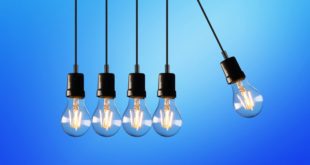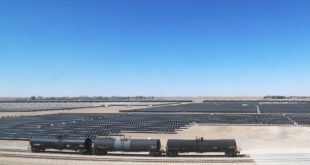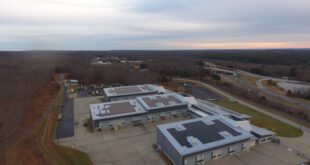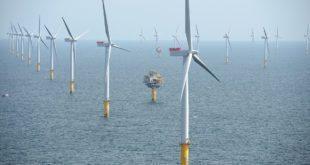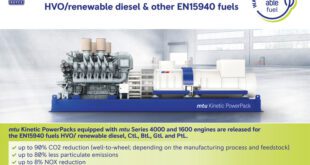There are two main types of solar power, solar thermal and photovoltaic. Solar thermal uses the sun light’s infrared energy to either heat a liquid or to warm a mass of material that will later on release its stored heat. Harnessing solar thermal energy involves building a house in such a way to collect the sun’s heat during the day and radiate it into the home during the evening. However, in the summer time the house’s construction uses mass to keep the sun’s heat out of the home.
Solar photovoltaic energy converting sun light into electrical energy. The most commonly associated component are the photovoltaic panels or solar panels that you see mounted on roofs.
This article will be focusing on how photovoltaic solar power (solar panels) and systems work.
Why are solar photovoltaic panels always on the south (or north) side of the roof?
In order to get the maximum electrical output from photovoltaic panels they need to be oriented to solar south in the northern hemisphere and solar north in the southern hemisphere. Solar north and solar south are the same as magnetic or compass north or south. There is about a fifteen degree difference between them.
Most solar photovoltaic panels are set at home latitude plus fifteen degrees or home latitude minus fifteen degrees. Depending on if you want a summer or winter bias to the angle of the solar panels. In higher latitudinal areas it makes more sense to have the photovoltaic panels set on a winter bias, so that during the winter the solar panels still get enough sun light to produce electricity.
How does a photovoltaic cell produce electricity?
A solar panel consists of a collection of photovoltaic cells. Each photovoltaic cell is made up of silicon wafer. Silicon in its pure state is a poor electrical conductor. During the manufacturing process, an impurity is added to the silicon so that when the photons (light) strikes the wafer electrons are released and create electrical current.
The type of electrical current produced by a solar panel is a low voltage direct current, or DC, typically in the range of six to twenty four volts. Photovoltaic panels have a nominal output voltage of 12 volts and an effective operating voltage of 17 or more volts.
A solar panel’s electrical output is affected by several factors. They are angle of the photovoltaic panels to the sun, time of day, time of the year and weather conditions. Solar photovoltaic panels produce more electricity during the middle of the day when the sun is directly overhead compared to the early morning and late evening when the sun light is striking the solar panel at a shallow angle.
Components of a residential solar power system
A residential solar power system consists of four components are: photovoltaic panels, charging controller, battery pack and an inverter. The photovoltaic panels convert sun light into electricity. The electricity is sent to the charging controller who keeps the battery pack fully charged, but not over charged. The battery pack sends the electricity to the inverter who converts the DC voltage to household AC at 120 volts and 60 hertz.
Photovoltaic panel
The output of a solar panel is stated in watts. The wattage is stated is typically for peak sun hours. Since the amount of sun light varies through the course of a day, to level out the variations the peak sun hours has been adopted by most manufactures to help installers and customer’s compare different solar panel models.
Suppose a solar panel is rated for 100 watts and an average of six peak sun hours is available per day. Then the solar panel would produce 100 watts * 6 peak hours = 600 watt hours of electricity or 0.6 kilo watt hours (KWh).
Charging controller
Charging controller or charge regulator controls the charging of the battery pack. It continually monitors the battery pack’s charge state. If the batteries are low, it will send electricity from the solar panels to the batteries. It also prevents over charging of the battery pack.
Don’t allow someone to convince you that a charging controller is not really required. Directly connecting the photovoltaic panels to the battery pack can permanently damage the batteries and possibly cause them to explode.
Battery pack
The battery pack’s purpose is to store electricity generated by the solar panels during the day and then at night or during extremely cloudy days provide electricity to the inverter.
The battery pack typically consists of lead acid batteries. Lead acid batteries are relatively inexpensive and readily available. There are many different types, sizes and capacities of batteries available. The most popular are gel cell and AGM deep cycle batteries because they are maintenance free and last a lot longer than wet cell lead acid batteries.
The most important thing to remember about the batteries is that the need to be deep cycle. Deep cycle batteries are designed to be discharged then recharged hundreds if not thousands of times. A deep cycle battery is designed to discharged to nearly empty, but not completely and then be slowly recharged over time. A common mistake for home owners is to think that they can use automotive batteries instead of deep cycle batteries. Car batteries are shallow cycle batteries. They are designed to discharge a lot of current quickly and then be immediately recharged.
Inverter
An inverter converts the DC electricity stored in the battery pack into household 120V AC. Almost everything in your home is powered by 120V electricity. Things like table lamps, freezer, lights, motors, dishwasher, and so on.
There are two main types of inverters sine wave and modified sine wave. The power company provides electricity as a sine wave. The electricity’s charge value goes smoothly from positive 120V to 0V to negative 120V and then back up to 0V and finally up to positive 120V. Then the cycle begins all over again. The time it takes to go through the entire cycle is one second.
Modified sine wave is also known as a square wave. Here the electricity’s charge value goes from positive 120V to negative -120 volts in effectively zero seconds.
Most household devices will function on a modified sine wave power. Light bulbs and motors will work, just not quite as efficiently as they would on sine wave electricity. However, there are some electronic devices that will not work on square wave electricity. It will be necessary to check with the manufacture to determine if the device will work on square wave electricity.
Now you have a basic understanding of solar power how it works to power your home. Now you have enough information about how solar power works to determine if it is a technology that you would want to invest in for your house.
 Alternative Energy HQ solar power for homes, wind energy, and bio fuel issues
Alternative Energy HQ solar power for homes, wind energy, and bio fuel issues


